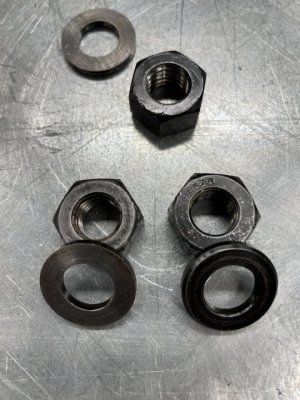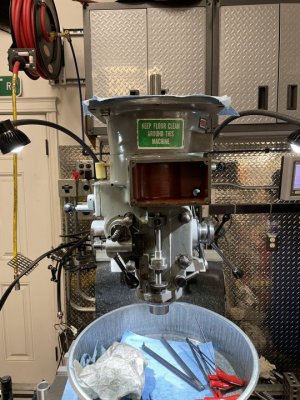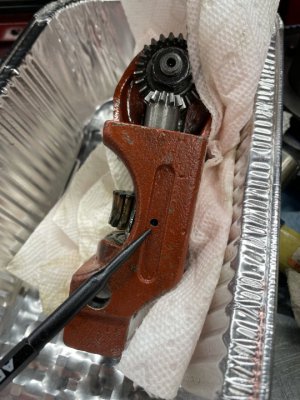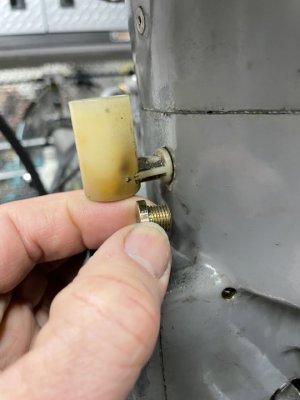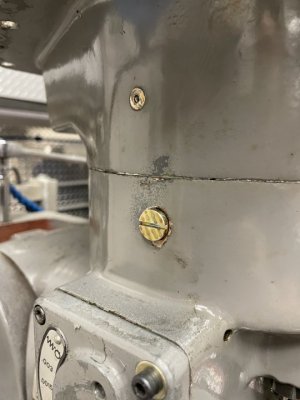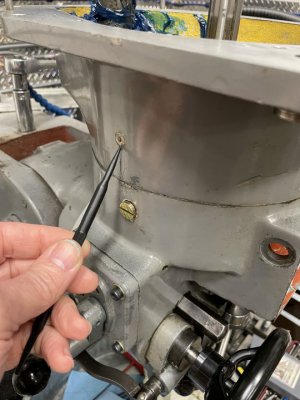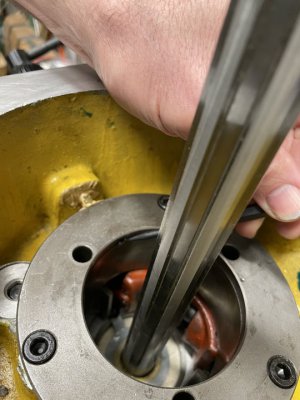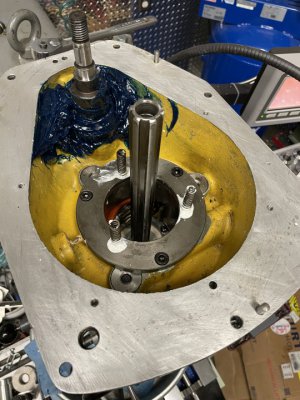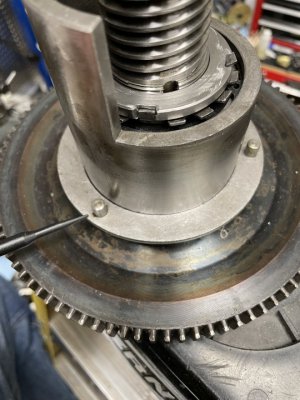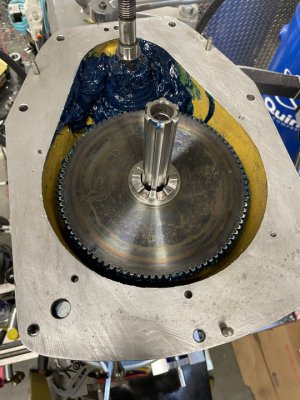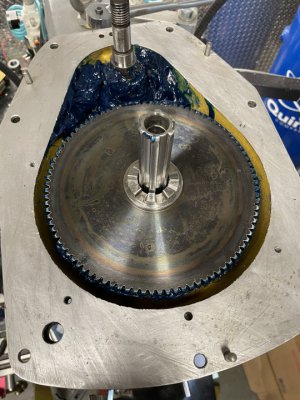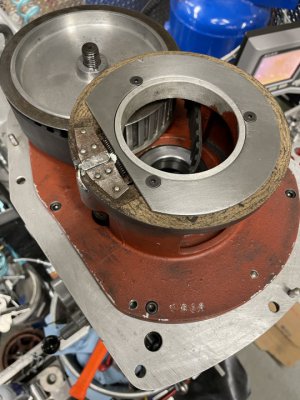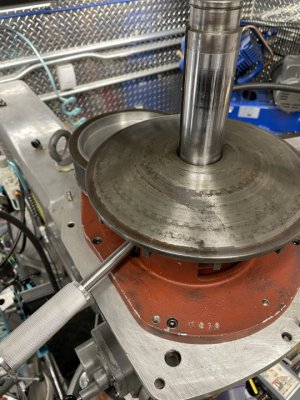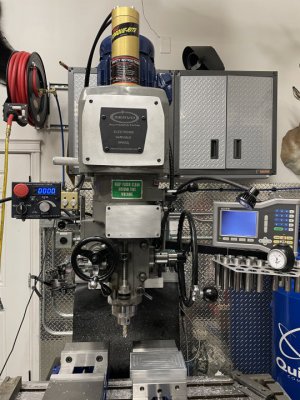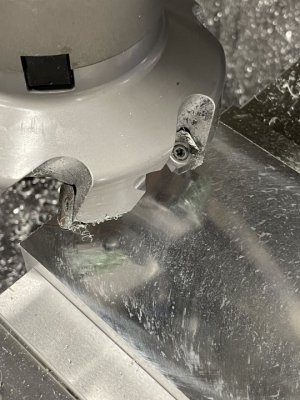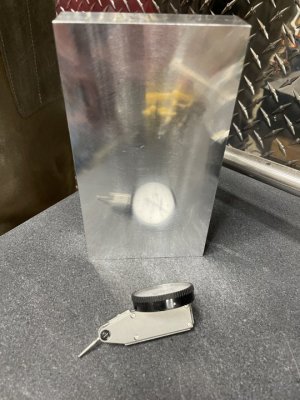Made some progress this morning, and re-assembled the quill housing. Got the spindle back from C&M on Wednesday. Quick turn around and nice work. Good people to deal with!
Installing the spindle/quill, cradle assembly( it's on the back side of the spindle rather than the front ala BP ), power down feed, clutch, etc is pretty much the same as a Bridgeport, so I won't bore you with all that. Where it gets different is on the upper trip lever "barbell" area. One side of the upper end of a Lagun micro-screw is dished out/countersunk as is one side of the plunger pin ( see photo ). You install them facing each other.
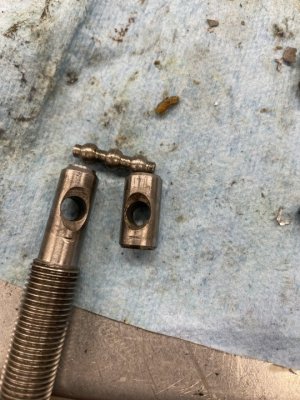
The hole that the barbell goes in is a through hole on a Lagun not a blind hole. The left side is tapped for an adjustable stop screw that allows you to adjust the depth of the barbell. Start out with it threaded in flush.
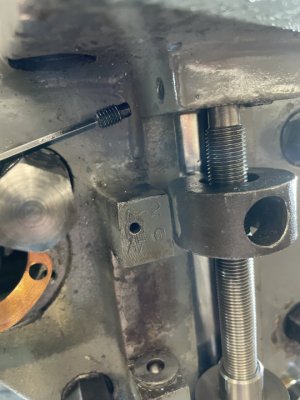
Then install the pivot plunger and the barbell and push up and pull down on the microscrew. The barbell should pivot like a seesaw and you'll see the end of the plunger go from nearly flush with the casting to about 2mm proud. Once it's settled into its place, screw the stop screw in gently until you feel it contact the left end of the barbell, and then back it off a 1/4 turn or so, and install the plug screw on the right.
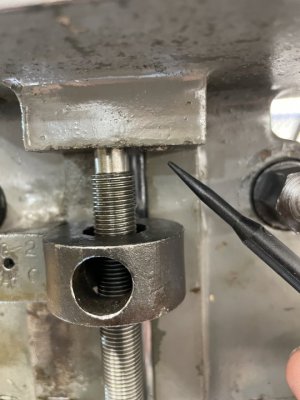
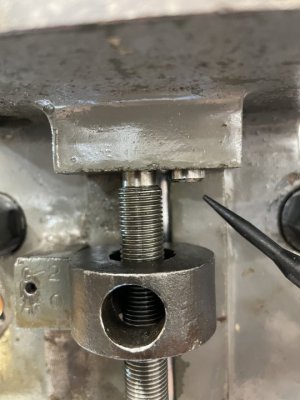
Adjustment of the kick out is the same as a BP. Once everything is adjusted and lubed, it's time to attach the bull gear housing.
Installing the spindle/quill, cradle assembly( it's on the back side of the spindle rather than the front ala BP ), power down feed, clutch, etc is pretty much the same as a Bridgeport, so I won't bore you with all that. Where it gets different is on the upper trip lever "barbell" area. One side of the upper end of a Lagun micro-screw is dished out/countersunk as is one side of the plunger pin ( see photo ). You install them facing each other.

The hole that the barbell goes in is a through hole on a Lagun not a blind hole. The left side is tapped for an adjustable stop screw that allows you to adjust the depth of the barbell. Start out with it threaded in flush.

Then install the pivot plunger and the barbell and push up and pull down on the microscrew. The barbell should pivot like a seesaw and you'll see the end of the plunger go from nearly flush with the casting to about 2mm proud. Once it's settled into its place, screw the stop screw in gently until you feel it contact the left end of the barbell, and then back it off a 1/4 turn or so, and install the plug screw on the right.


Adjustment of the kick out is the same as a BP. Once everything is adjusted and lubed, it's time to attach the bull gear housing.


